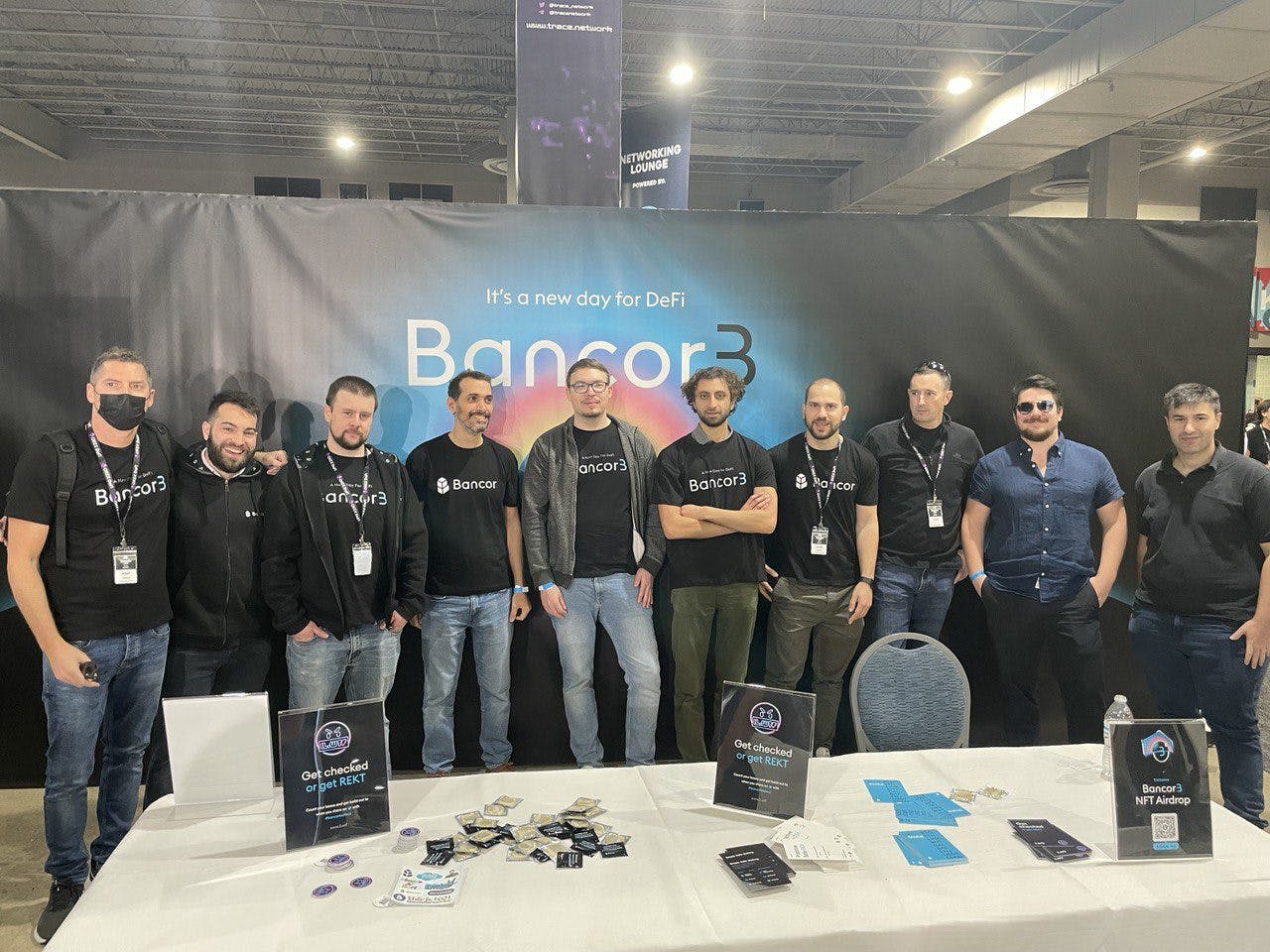New Version of Bancor Ups Ante With Crypto Market-making Rewards
Version 3 of the liquidity protocol aims to address all the shortcomings of its predecessor

Source: Bancor
- Focus on providing sustainable liquidity for DAOs and token treasuries
- Revamps impermanent loss protection and single-sided staking from V2.1
The latest version of an automated market maker for cryptocurrencies launched on Ethereum’s mainnet Wednesday with a host of features for liquidity providers.
Bancor AMM has dubbed the new trading platform V3, an evolution for the company that invented the automated market maker (AMM) liquidity pool concept in 2017 — which Uniswap later iterated upon to become the dominant decentralized exchange protocol with more trading volume than its competitors combined.
The latest edition improves upon the prior version’s two key innovations — impermanent loss protection and single-sided liquidity provision.
“With regard to the functioning of the protocol, the product and the user experience, we were looking to alleviate basically all of the major pain points that we could find,” Bancor Head of Research Mark Richardson told Blockworks.
One of the risks of providing liquidity in a DEX, or decentralized exchange, is the change in the relative value between the tokens in a given pair — known as impermanent loss, or IL. To be profitable, a liquidity provider must earn swap fees from trades on the exchange sufficient to compensate for the IL disparity.
Bancor debuted a novel IL protection feature in a previous version, but it had one major shortcoming: An LP needed to provide liquidity for at least 100 days for full protection.
V3 eliminates that delay, replacing it with a “cooldown period” of seven days to withdraw from a position, plus a new 0.25% withdrawal fee, but in exchange, the IL coverage kicks in immediately.
“Our chief economist Stefan Loesch ran a bunch of Monte Carlo simulations using 14 months of data from version 2.1 and concluded that something like a seven-day cooldown period is going to be sufficient for that,” Richardson said.
Single-sided liquidity — adding only one token to a pool — was a key component of earlier versions, as each pool is paired with Bancor’s native BNT token.
The problem: a limit on the amount of deposits the protocol could handle. Once a cap was reached, more BNT had to be added to a pool to open up space for additional token deposits.
That led it to become a sort of “exclusive club,” according to Richardson, stunting growth.
“For a DeFi protocol to unnecessarily restrict your [total value locked] is kind of shooting yourselves in the foot.”
As a salve, V3 introduced what the team calls “the first-ever fungible Single-Sided Pool Tokens.” Unlike normal pool tokens, these LP positions incorporate an auto-compounding feature, aimed at decentralized autonomous organization (DAO) treasuries, which allows token teams to incentivize liquidity.
Previously, when a new Web3 project wanted to incentivize the formation of a pool, it tended to attract so-called mercenary capital, which would farm and sell the project’s tokens, reducing the treasury’s holdings
Now, DAOs and individual decentralized finance (DeFi) users can deposit capital into a Bancor pool, and see their token incentives auto-compound. That alleviates the need to manually claim them and saves on Ethereum gas fees — transactions that power the blockchain.
Uniswap’s V3 lacks a way for third parties to incentivize liquidity, explaining why many teams continue to offer incentives for market makers on the older Uniswap V2, which — more than a year after Uniswap V3’s launch — remains among the top 10 DEXes by trading volume, according to CoinGecko.
Also, unlike Uniswap V3, which uses non-fungible tokens (NFTs) to represent an LPs share of a pool, Bancor’s new LP tokens are easily composable in other DeFi products — for instance they might be used as collateral in Maker to mint DAI or supplied to Aave.
“Uniswap V3 has a completely different philosophy and objective,” Richardson said. “It doesn’t care about continuous liquidity. It doesn’t even espouse that markets should function correctly. It’s basically just a limit order protocol — it has all the shortcomings of an order book, and that makes it very difficult for things like natural price discovery.”
Get the news in your inbox. Explore Blockworks newsletters:
- The Breakdown: Decoding crypto and the markets. Daily.
- 0xResearch: Alpha in your inbox. Think like an analyst.






